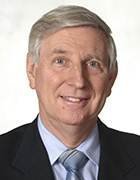
Brian Jackson - Fotolia
4 data center UPS vendors to evaluate
UPSes are crucial components to any backup power system. Use power ratings, infrastructure voltage requirements and the UPS type to guide the selection process.
Organizations must invest in effective data center power systems to avoid costly downtime. But admins shouldn't just focus on primary power systems. Backup power hardware, such as uninterruptible power supplies, is also essential.
During the selection process, admins can look at three main types of uninterruptible power supplies (UPSes): online, line-interactive and standby.
With online UPSes, the battery is typically always available and does not require switching to the backup source when primary power is lost. Line-interactive UPSes can adjust to power fluctuations without backup battery engagement. They require a switch to move to backup power when there's a full power loss. A standby data center UPS is similar to a line-interactive model, but it doesn't have the voltage filtering capabilities. It also uses a switch to move to backup power.
In terms of sizing, most vendors offer UPSes as an individual unit, a high-performance UPS or a full data center UPS. Individual units function on a one-to-one basis and provide backup power to one hardware device. A high-performance unit typically has multiple outlets that admins can plug into multiple hardware devices. These UPSes power multiple units for longer periods during a power outage. A full data center UPS is a centralized bank of batteries that power an entire data center during an outage until admins engage other backup systems. They can typically power devices uninterrupted for up to 30 minutes.
Data center UPS market offerings
Choosing the right UPS depends on specific data center requirements, such as number of devices, power system voltage settings and budget. Luckily, there are several vendors in the data center UPS market that organizations can evaluate. For pricing, organizations should reach out to the vendor or a value-added reseller.
APC by Schneider Electric Easy UPS 3L
The Easy UPS 3L model from APC by Schneider Electric is part of the company's Easy UPS range. It comes in two models: 500 or 600 kVA. Either model is recommended for medium and large commercial data centers and feature a footprint designed to save real estate and have a 96% power efficiency rating.
Admins can use this data center UPS with up to three other UPSes for capacity or redundancy. It has embedded dust filtration, IP20 protection and pest protection to aid maintenance. The Easy UPS 3L uses a standard top cable entry and a user-friendly 7-inch touchscreen display interface.
The Easy UPS 3L comes in at 77 x 39 x 33 inches, yet weighs as much as some larger UPS devices, with 1,466 lbs. for the 500 kVA model and 1,642 lbs. for the 600kVA, respectively.
Eaton Power Xpert 9395
The Eaton Power Xpert 9395 comes in five different models ranging from 200 to 1200kW high performance. They all offer 99% power efficiency with a low cost of ownership and high reliability and availability.
Each cabinet comes with a 10-inch color touchscreen display for easy control and works with the vendor's Intelligent Power Software Suite management software for monitoring and management. Admins can suspend machines, set power consumption limits and integrate systems with VMware's vRealize Operations Manager.
The Power Xpert 9395 produces 37% less heat and 10% more power than competing products, with lithium-ion battery options. Each UPS is between 73 to 74 inches for height and is 32.7 inches for depth. The width depends on the model, but widths range from 52.4 to 170.2 inches.
Mitsubishi Electric Summit Series
Mitsubishi Electric offers several UPS models including the Summit series, which is its most energy-efficient model at 99.993% efficiency. It has seven different energy certifications, which include Energy Star, IEEE 587, American National Standards Institute C62.41-1991 Standard for Surge Withstand Capability and the International Electrotechnical Commission's Semiconductor Converter Standards.
The Summit series is a three-phase continuous duty, online/double conversion, solid-state UPS and is available in two sizes: 500 kVA and 750 kVA. These systems also have instant waveform control and use silicon carbide in the semiconductors.
The UPS cabinets are 59.1 x 33.8 x 80.6 inches for the 500 kVA and 84.6 x 33.8 x 80.6 inches for the 750 kVA. They require a minimum clearance of 1 inch on the sides, 24 inches on the top for ventilation and 43 inches in the front for maintenance.
Vertiv Liebert Trinergy Cube UPS
Vertiv's Liebert Trinergy Cube UPS is available in three models: 150 kW, 200 kW and 400 kW core. It offers up to 99% power efficiency, a low total cost of ownership and a reduced carbon footprint.
It offers simplified cable routing options with unlimited I/O power connection availability; it can also survive a wide range of data center temperatures, from 68 to 131 degrees Fahrenheit without significant performance loss.
Admins can use Trinergy Cubes in parallel if they connect eight of them together, which allows teams to expand power infrastructure with minimal effects to power systems.
The UPSes feature both three and four wire options, which enables legacy device replacement. The Trinergy Cube is the only UPS on the market that is hot-scalable to reach up to 1.6 MW in a single unit, which provides significant electrical infrastructure and space savings.
The Trinergy Cubes with UPS ratings between 400 and 1,600 are all the same height (80 inches) and depth (36 inches), but vary in width from 105 inches to 245 inches. The size also determines the system's weight, which can go from 3,785 lbs. to 9,855 lbs. once unpackaged.







